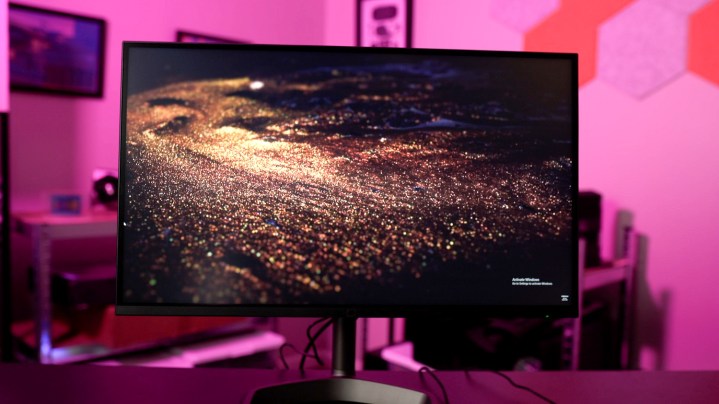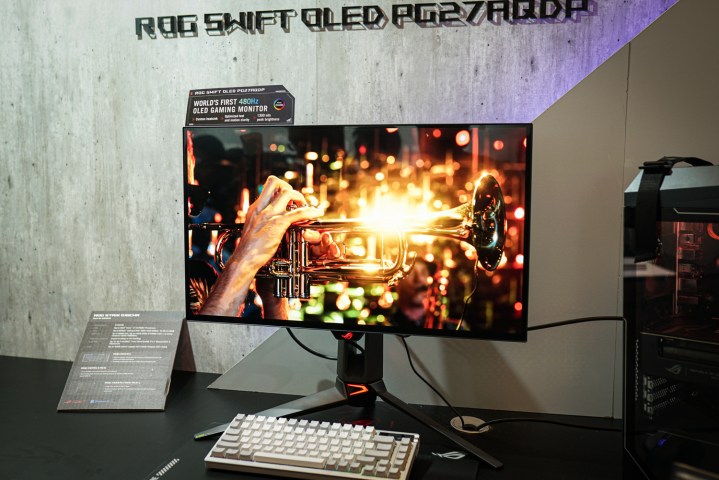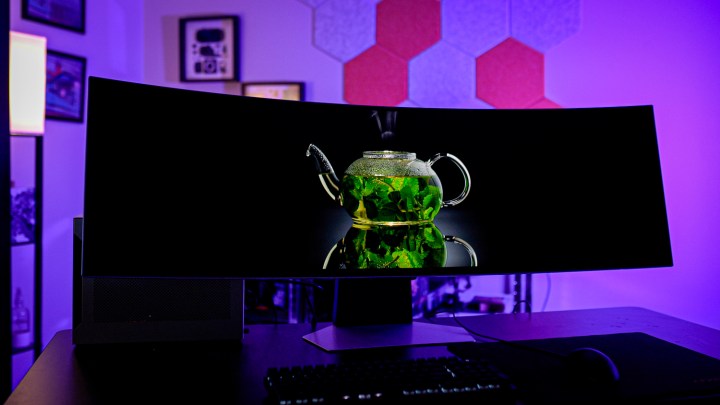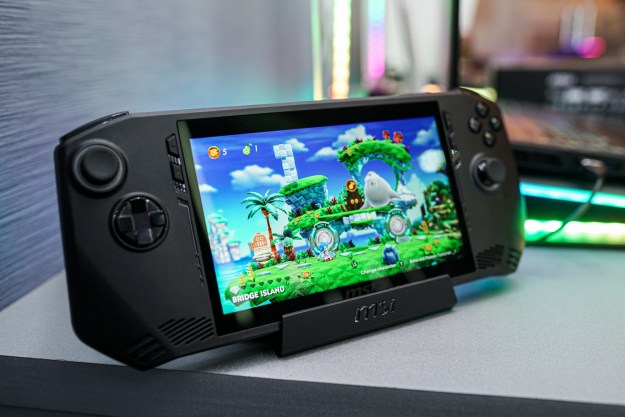
Sometimes, you get everything you’ve wanted. We probably won’t see much innovation from gaming monitors over the next couple of years. We’re on the heels of CES 2024, and we saw some exciting gaming monitor announcements — the first 4K QD-OLED displays, a 480Hz OLED monitor, and even some experimentation with glasses-free 3D.
After several years of innovation only applying to the most expensive of expensive gaming monitors, displays are finally providing a leap forward for gamers. Gaming monitors have hit a new mountaintop peak — time to enjoy the view and imagine the possibilities of what comes next.
The peak

One of the earliest ReSpec entries I wrote was about the sad state of HDR on gaming PCs. I wrote the article about a year and a half ago, but that’s not when the problem began. It was years in the making, really ever since Microsoft introduced HDR to Windows several years ago. Windows itself had issues, as did proper support in games, but the big problem was monitors.
There wasn’t a ton of innovation in gaming monitors for several years. There was a bit of a jump when IPS panels became cheaper, but most of the innovation in TVs, from plasma to full array local dimming, missed the world of monitors. For PC gamers, it was a race of resolution and refresh rate, without much concern for image quality. And even then, displays like the Asus ROG Swift 360Hz PG259QNR that pushed refresh rate at clear cost to image quality and resolution came in at ridiculous prices nearing $3,000, and sometimes even more.
It’s hard to mark a definitive turning point, but I’d set it on the Sony InZone M9 in mid-2022 — a monitor that, by today’s standards, is just OK and way overpriced. Rocking full-array local dimming with 96 zones under $1,000, it was a turning point. And after, we saw an influx of mini-LED displays packing even more zones like the Cooler Master Tempest GP27Q, as well as a deluge of OLED options like the LG UltraGear OLED 27.

With displays commonly hitting the resolution and refresh rate gamers craved, the world of gaming monitors pivoted to image quality. Now, it’s hard to find gaming displays climbing up to those obscene prices of $3,000 or more, and although high-end gaming displays still aren’t cheap at around $1,000, they’re much more realistic than they previously were.
Now, we’re getting even more monitors that hit the resolution, refresh rate, and image quality gamers want. The recent Alienware 27 QD-OLED is a prime example of that — it’s still an amazing OLED display, but now with a faster refresh rate and lower price compared to what we saw last year. I don’t know if OLED gaming monitors will ever truly become budget options, but they’re getting cheaper and better. That’s a good sign.
We’ve hit a peak for gaming displays. It’s important to highlight that it’s a peak, not the peak. Things may slow down for a few years, but there are still a lot of places for gaming monitors to go from here.
The resolution and refresh rate dilemma

Walking around the halls of CES, I asked every display brand I talked to a simple question: “Where do gaming monitors go from here?” No one has a crystal ball, and there’s bound to be some tech that comes out of left field that could push gaming monitors to places they’ve never gone before. For now, however, we’re definitely in an era of refinement.
Naturally, with image quality solved, you look back to the bread and butter of gaming displays — resolution and refresh rate. I saw a lot of that in action at CES this year. Monitors like the 2024 Samsung Odyssey OLED G8 are finally bringing OLED to a 4K resolution on a monitor, and the Asus ROG Swift PG27AQDP is offering up a refresh rate of 480HZ to an OLED display, a first for gaming monitors.
The pace of gaming monitors has hit breakneck speed over the past couple of years, and we’re starting to hit a wall. The most obvious next frontier is resolution, but that poses some issues.
As we’ve seen from TVs, there isn’t enough content to satisfy resolutions above 4K right now, which is an idea that David Phelps, vice president of product management at Samsung Electronics, agrees with. 8K is the next destination, but gaming monitors don’t face a content problem. They face a power problem.
Games don’t have to settle on one resolution. Instead, developers create assets at an extremely high resolution, and then the engine actually handles the final output resolution that the game is rendered at. Most modern AAA games have their assets at 8K or sometimes even 16K, assuming it’s something detailed enough to fill a significant portion of the screen (think character models over a minor texture). For gamers, at least, there isn’t a content problem.
PCs are the problem. Sure, the RTX 4090 can play some games at 8K with the assistance of DLSS 3.5, but it’s not a practical resolution for most other GPUs. 4K is already plenty demanding for a GPU like the RTX 4070 Ti. 8K for that graphics card is a pipedream.

Resolution shares a problem with refresh rate, as well — diminishing returns. Both specs become more demanding in a linear fashion. Your PC needs to spit out more frames and render more pixels. The improvement of the experience doesn’t go up in a linear fashion, however. Each jump in pixels means that individual pixels are less significant, and every leap in refresh rate becomes less important for motion clarity as you go up the scale.
If you go from a 1080p display at 60Hz to a 4K display at 240Hz, that’s a massive leap. Going from a 4K display at 240Hz to an 8K display at 960Hz is a much less pronounced difference despite being the same 4X multiplier for resolution and refresh rate. At a certain point, the benefits of a higher resolution and refresh rate don’t impact the experience of playing a game.
Where do we go now?

So, if resolution and refresh rate aren’t the answer, what is? According to Phelps, it’s form factors. We’ve seen how innovation in the physical design of a gaming monitor can birth entirely new product categories, with the Samsung Odyssey OLED G9 being a prime example with its unique 32:9 aspect ratio. That’s where I suspect we’ll see the lion’s share of innovation over the next few years.
We’re seeing some of that in action already. Of course, there’s the 32:9 aspect ratio, but there are also displays like Acer’s Predator SpatialLabs View 27 that can simulate 3D in games with head and eye tracking. Samsung has its own monitor here, the aptly-named 2D/3D monitor, which can apply the effect to any game.
Elsewhere, there are feature innovations. This year, we’re seeing HP’s Omen Transcend 32, which can provide 140 watts of power over USB-C. Maybe once we see power delivery over USB-C powerful enough to run a gaming laptop, we could see a true one-cable solution on a gaming monitor. That’s something to get excited about, and it doesn’t even touch the panel itself.
If we take cues from the TV world, we saw the first transparent displays as actual products from LG and Samsung, utilizing OLED and micro-LED, respectively. Perhaps there’s some application of that tech in the world of gaming monitors, too.
We can see early looks at what’s to come, but the main innovation in gaming displays over the next few years remains a mystery. And sometimes, that’s the best place to be. After all, you often don’t know what you want until you finally have it.
Editors' Recommendations
- How I unlocked the hidden modes of DLSS
- GDC 2024 in review: Path tracing, upscaling, and CPU-killing tech
- This new GPU feature is ‘a whole new paradigm’ for PC gaming
- This is the best gaming keyboard I’ve ever used — and you’ve never heard of it
- Gigabyte just upped its OLED monitor game






